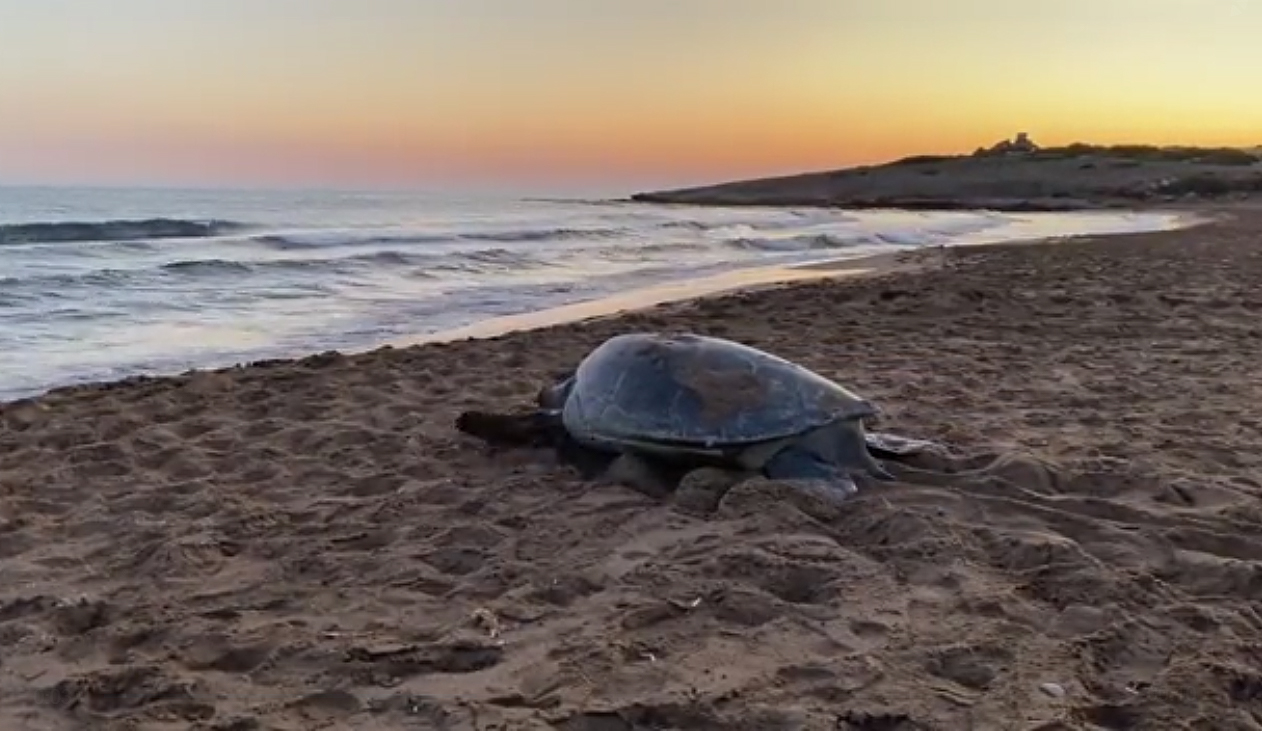Researchers from the University of Exeter studying the nesting habits of green and loggerhead turtles have discovered that the turtles are returning to the island earlier each year, a phenomenon seen as a successful adaptation to climate change.
Biologists are examining their breeding habits, including an uptick in hatchling numbers on the island’s beaches and elsewhere in the Mediterranean, as well as a shift of their nesting season, based on decades of recorded data.
A team from Exeter University studied 600 individual females returning to the same beach in the north to identify the exact factors driving these changes.
Previous analysis of 30 years of data suggested that by the year 2100, there would be hardly any offspring if the turtles did not nest earlier each year.
By planting temperature loggers in nests and retrieving them at hatching, scientists determined that the turtles must hatch 0.5 days earlier per year to maintain their current sex ratio, and 0.7 days earlier if catastrophic hatchling losses – potentially leading to their extinction – are to be prevented.
Indeed, loggerhead turtles in Cyprus have been nesting 0.78 days earlier each year since 1993.
According to recently analysed data, they were found to be laying eggs 6.47 days earlier for every 1°C increase in sea temperature.
The turtles’ sex determination depends on temperature, with warmer conditions leading to more females being born. However, if it gets too hot, fewer hatchlings survive, creating a complex interplay of factors whose final outcome remains uncertain.
Turtles return to nest in the same area where they themselves hatched – an instinct known as natal philopatry. It is currently unclear whether they would be able to adapt further by nesting on unfamiliar beaches if necessary.
For now, the island’s turtles appear to have adapted to rising water temperatures to ensure the continuation of their species. However, their foraging and breeding habits risk further disruption if food availability also changes.
“To know if the advancement we see now will continue into the future, it is crucial to understand combined effects of changes such as shifts in the age structure of the population and how individual turtles respond to environmental change,” Mollie Rickwood from the university’s Centre for Ecology and Conservation said.
The team observed that mature females and larger clutch layers were driving the trend of nesting earlier.
Damla Beton from the Society for Protection of Turtles (SPOT) said it was unclear whether cooler locations could compensate for hatchling losses by increasing hatchling numbers over time.
“Although our turtles appear to be coping […] it is unclear how long they may be able to do this before conditions in Cyprus are no longer suitable,” she said.







Click here to change your cookie preferences